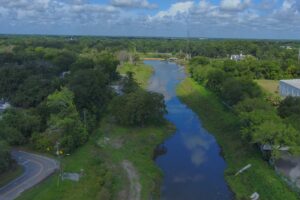Conserving water benefits Florida’s springs
April 8, 2021
It may seem like a lot to observe both Springs Protection Awareness Month and Water Conservation Month in April. But for us at the St. Johns River Water Management District, it makes total sense as the two are deeply intertwined as part of our core missions work. While conserving water is important to all of us on so many levels, it is key to protecting our springs.
In 2016, the Florida Legislature identified 30 “Outstanding Florida Springs” that require additional protections to ensure their conservation and restoration for future generations. Our District is home to eight of those Outstanding Florida Springs plus at least 140 others.
Protecting the Upper Floridan aquifer is one of the District’s highest priorities because it sustains both our springs and the water supply most of us rely upon. Like so many of you, we are committed to protecting Florida’s springs and water conservation is essential to preserving these iconic water bodies.
Many of the District’s projects benefit springs and water conservation efforts. For example, over the past seven years, the District has invested $156 million in local communities to complete 253 projects that protect water resources. That investment has resulted in 144.81 million gallons per day (mgd) of alterative water supplied and 8.7 mgd of water conserved, meaning less water being withdrawn from groundwater (aquifers and springs). Specifically focused on springs, we have contributed $53 million since 2014 to projects that have resulted in 114 million gallons of alternative water supplies (such as expanded use of reclaimed water) and have resulted in 4.6 mgd of water conserved.
Three District cost-share projects to benefit our springs quickly come to mind as examples:
- The District is partnering with the city of Ocala and Florida Department of Environmental Protection (DEP) to build a non-traditional Lower Floridan aquifer water supply source at the city’s Water Treatment Plant 2 (WTP #2). The project is expected to support flow improvements to Silver Springs by replacing currently permitted withdrawals from the Upper Floridan aquifer at WTP #1, a plant that is 4 miles closer to Silver Springs. The estimated modeled flow benefit to Silver Springs is nearly 7 cubic feet per second (cfs) which will help the Silver Springs Minimum Flows and Levels Prevention Strategy.
- The District, DEP and the city of DeLand are funding a project to expand the availability of reclaimed water by adding more than three miles of new distribution pipelines. The increased use of reclaimed water as opposed to potable groundwater is estimated to increase flow at Volusia Blue Spring by 0.3 mgd. Construction on this beneficial project is anticipated to begin this month.
- The Ocala Wetland Recharge Park was a collaborative project with the city of Ocala and DEP. We helped celebrate the grand opening on April 2. This project is designed to enhance aquifer recharge to help Silver Springs by increasing water flow by about 2.5 mgd and improving water quality through a stormwater treatment area. Additional benefits include providing open space for passive public recreation.
The District has worked with other agencies for many years to increase knowledge and understanding about the region’s springs, while also working to protect them, guided by the very latest science, including through our three-year Collaborative Research Initiative on Sustainability and Protection of Springs. Thanks to our District team and our many partners for all the work being done to preserve our precious spring systems! You can learn more about our springs work at www.sjrwmd.com/springs.






